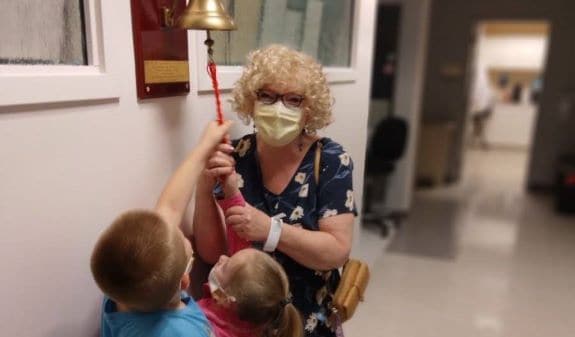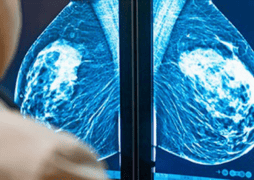It’s one of the mysteries of breast cancer: the fact that a large percentage of women at high risk of breast cancer choose not to take medications that could help prevent the disease. By some estimates, less than five percent of women eligible for such medications actually take them.1-2 For a disease many women say is their number one health fear, it’s a surprising finding.
And it’s not that the benefits of these medications are unproven. Chemoprevention – the broad term given to medications that can lower the risk of developing cancer – has been an established approach to breast cancer prevention for over a decade. The drug tamoxifen was approved by the U.S. Food and Drug Administration for preventing the disease in 1998 after a large clinical trial showed it lowered the risk of developing breast cancer in women at high risk for breast cancer (defined as a five-year risk of breast cancer of at least 1.67 percent). Raloxifene, a drug already used to treat osteoporosis, was found to have a similar impact on risk and was approved for chemoprevention of breast cancer in 2007.
Though study results vary slightly, tamoxifen cuts the risk of both invasive breast cancer and non-invasive breast cancer (such as ductal carcinoma in situ, DCIS) by about 50 percent and raloxifene cuts these risks by about 40 percent.3-5
How do they work?
Tamoxifen and raloxifene are both SERMS (selective estrogen receptor modulators) which work by blocking the effect of estrogen on breast cells. Estrogen promotes the development of estrogen receptor-positive breast cancer – the most common type of breast cancer. Blocking estrogen from breast cells can greatly reduce cancer risk.
What are the side effects?
Like all medications both tamoxifen and raloxifene have side effects. Raloxifene has fewer harmful side effects than tamoxifen though, which may make it a better choice for some women.
| Health effects of tamoxifen and raloxifene5-6 | ||
| Tamoxifen | Raloxifene | |
| Common short-term side effects | Hot flashesVaginal dischargeOther side effects (such as nausea) are rare. | Hot flashesLeg crampsSwelling in the legs, hands or feet |
| Long-term side effects | Increased risk of:Cancer of the uterusCancer of the endometriumStrokeBlood clotsCataracts | Increased risk of:StrokeBlood clots (risk is less than with tamoxifen) |
Learn more about the health effects of tamoxifen and raloxifene.
Why do women at high risk choose not to take tamoxifen or raloxifene?
The side effects of tamoxifen and raloxifene likely turn many women – and their health care providers – away from chemoprevention. The difficulty of accurately weighing the chances of benefits and harm for an individual woman can sway women away from chemoprevention. Also, some women place a higher priority on avoiding common short-term side effects, like hot flashes, than on longer-term, less common risks, like breast cancer.7
Whatever the exact reasons, few women at high risk of breast cancer use chemoprevention. For example, in 2005, only 0.08 percent of the general U.S. female population (or 60,000 women out of two million eligible) took tamoxifen for chemoprevention.7
When do benefits of chemoprevention likely outweigh risks?
Of course, being concerned about the side effects of any medication is a natural and smart approach to one’s health. No one wants to trade the prospect of one life-threatening disease (breast cancer) for another (stroke, uterine cancer). However, these risks and benefits may balance out differently for different women. At what point and for what women do the side effect risks get outweighed by the benefit of lowering the risk of breast cancer?
A new study in 2011 provided updated information on where the benefits of tamoxifen and raloxifene are likely to be greater than the risks.8 In general, the younger the woman and the higher her five-year risk, the more likely she will benefit without harm. In addition, for women who still have a uterus, raloxifene is the better choice, since it doesn’t raise the risk of uterine cancer. For women without a uterus, tamoxifen and raloxifene are fairly similar. Women over 70 tend to benefit the least from chemoprevention, because they have a higher chance of having side effects.
Looking at some examples from the study: for white women ages 50 to 59 without a uterus, the benefits of raloxifene outweigh the side effect risks for those with an estimated five-year breast cancer risk of 3.5 percent or higher. For women ages 50 to 59 without a uterus, benefit starts at a five-year breast cancer risk of 2.5 percent for raloxifene and 3.0 percent for tamoxifen. African American women tend to have a higher risk of blood clots, so generally need a higher breast cancer risk before benefits start.8
| Estimating five-year breast cancer risk |
| To get the most benefit from chemoprevention, we need to be able to correctly identify those women at higher risk. Tamoxifen and raloxifene are only recommended for chemoprevention in women with a risk of developing breast cancer of 1.67 percent or higher over the next five years. While there are a number of tools available for estimating breast cancer risk, the primary tool for determining a woman’s eligibility for chemoprevention is the National Cancer Institute’s Breast Cancer Risk Assessment Tool. The tool estimates risk by taking into account things like a woman’s age, race/ethnicity, family history and reproductive factors. Of course, it is important to remember that none of these tools can perfectly predict who will or won’t get breast cancer.Learn more about the Breast Cancer Risk Assessment Tool. |
Summary
Tamoxifen and raloxifene have been demonstrated to lower the risk of breast cancer in women at high risk of the disease. Like all medications, they each have potential side effects, some of which can be serious. Both drugs raise the risk of hot flashes, blood clots and stroke. Tamoxifen, but not raloxifene, also raises the risk of cataracts and uterine cancer. Growing evidence, though, helps us identify who is likely to benefit from these drugs without such harms. In general, the younger the woman and the higher her five-year risk, the more likely she will benefit without harm. Women over 70 tend to benefit the least from chemoprevention. For women who still have a uterus, raloxifene is a better choice than tamoxifen.
For women at high risk, the decision to take tamoxifen or raloxifene to lower risk is a uniquely personal one. Understanding the potential harms and benefits of these drugs can help each woman make the best decision possible.
Dr. Powel Brown, a member of Komen’s Scientific Advisory Board and Professor and Chair of the Department of Clinical Cancer Prevention at the University of Texas MD Anderson Cancer Center, says “this article points out a very important issue for women’s health. It is now possible to identify women at high risk of breast cancer who are also at low risk of serious side effects from tamoxifen and raloxifene. Such women have the most benefit and the least risk of preventive therapy with medications. It is critical that we get the message out that women can safely reduce their risk of breast cancer, and that medical therapy is an important option for women at high risk of breast cancer.”
Learn more about tamoxifen and raloxifene.
| Our commitment to research |
| At Susan G. Komen for the Cure®, we are committed to ending breast cancer forever by energizing science to find the cures and ensuring quality care for all people, everywhere. Our global research and grants programs are essential driving forces for achieving this mission. A Komen for the Cure grant has touched every major breast cancer breakthrough and major scientists of the past 30 years—including three Nobel Prize winners. Learn more about the exciting research we are funding in the area of prevention. |
References
- Ropka ME, Keim J, Philbrick JT. Patient decisions about breast cancer chemoprevention: a systematic review and meta-analysis. J Clin Oncol. 28(18): 3090-3095, 2010.
- Amir E, Goodwin PJ. Breast cancer chemoprevention gets personal. J Clin Oncol. 29(17): 2296-2298, 2011.
- Martino S, Cauley JA, Barrett-Connor E, et al. for the CORE Investigators. Continuing outcomes relevant to Evista: breast cancer incidence in postmenopausal osteoporotic women in a randomized trial of raloxifene. J Natl Cancer Inst. 96(23): 1751-1761, 2004.
- Cuzick J, Forbes JF, Sestak I, et al. for the International Breast Cancer Intervention Study I Investigators. Long-term results of tamoxifen prophylaxis for breast cancer: 96-month follow-up of the randomized IBIS-I trial. J Natl Cancer Inst. 99(4): 272-282, 2007.
- Vogel VG, Costantino JP, Wickerham DL, et al. for the National Surgical Adjuvant Breast and Bowel Project. Update of the National Surgical Adjuvant Breast and Bowel Project Study of Tamoxifen and Raloxifene (STAR) P-2 Trial: Preventing breast cancer. Cancer Prev Res (Phila). 3(6): 696-706, 2010.
- Barrett-Connor E, Mosca L, Collins P, et al. Effects of raloxifene on cardiovascular events and breast cancer in postmenopausal women. N Engl J Med. 355(2):125-37, 2006.
- Waters EA, Cronin KA, Graubard BI, Han PK, Freedman AN. Prevalence of tamoxifen use for breast cancer chemoprevention among U.S. women. Cancer Epidemiol Biomarkers Prev. 19(2): 443-446, 2010.
- Freedman AN, Yu B, Gail MH, et al. Benefit/risk assessment for breast cancer chemoprevention with raloxifene or tamoxifen for women age 50 years or older. J Clin Oncol. 29(17): 2327-2333, 2011.



